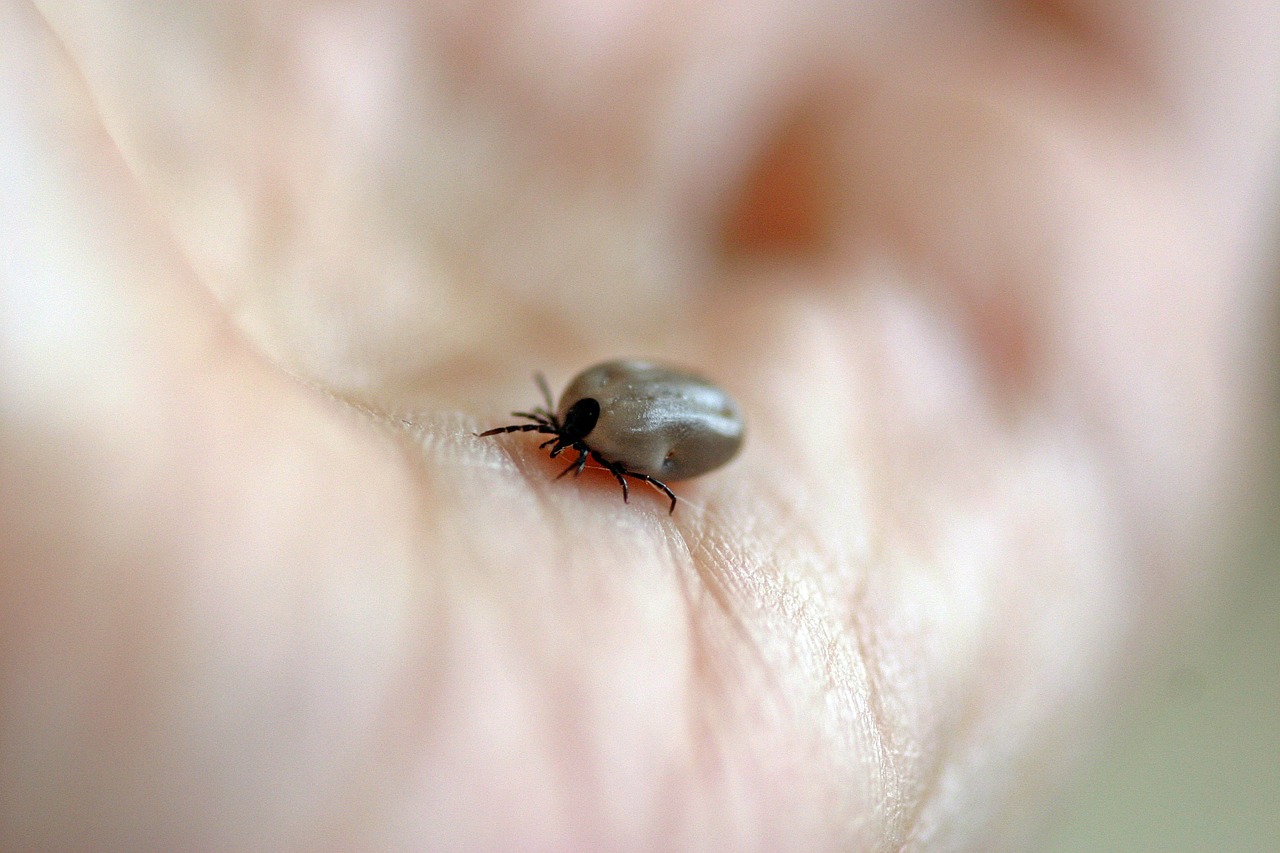
With the approach of the cooler weather we thought it would be appropriate to discuss ticks and tick prevention. Everyone that lives in the Hudson Valley is aware of ticks and is acquainted with the damage they can do to a body. We don’t know too many people that have not either had a tick borne disease or know someone that has.
Let’s examine the type of ticks present in our area:
American dog tick (Dermacentor variabilis)

Where found: Widely distributed east of the Rocky Mountains. Also occurs in limited areas on the Pacific Coast.
Transmits: Tularemia and Rocky Mountain spotted fever.
Comments: The highest risk of being bitten occurs during spring and summer. Dog ticks are sometimes called wood ticks. The female is the most likely to bite.
Blacklegged tick (Ixodes scapularis)

Where found: Widely distributed across the eastern United States.
Transmits: Lyme disease, Anaplasmaosis, Ehrlichiosis, Babesiosis and Powassan virus.
Comments: The greatest risk of being bitten exists in the spring, summer, and fall. However, adults may be out searching for a host any time winter temperatures are above freezing. Stages most likely to bite humans are nymphs and adult females.
Brown dog tick (Rhipicephalus sanguineus)

Where found: Worldwide.
Transmits: Rocky Mountain spotted fever (in the southwestern U.S. and along the U.S.-Mexico border).
Comments: Dogs are the primary host for the brown dog tick in each of its life stages, but the tick may also bite humans or other mammals.
Lone star tick (Amblyomma americanum)

Where found: Widely distributed in the southeastern and eastern United States.
Transmits: ehrlichiosis, Heartland virus, tularemia, and STARI.
Comments: A very aggressive tick that bites humans. The adult female is distinguished by a white dot or “lone star” on her back. Lone star tick saliva can be irritating; redness and discomfort at a bite site does not necessarily indicate an infection. The nymph and adult females most frequently bite humans and transmit disease. A bite from this tick can also make you allergic to beef or pork, we know this happens in humans, so why not in dogs or cats as well?
So now we know the players let’s talk about prevention. There are four different types of products to control ticks on our pets. It is very important to understand that cats are not small dogs and many of the products that we would use on a dog are extremely toxic to a cat. Please read any label carefully before you apply a product to your dog or cat. We have seen cats die from having tick products that are designed for dogs placed on them. That being said, most of the products are considered safe when used as directed. The key to that statement is AS DIRECTED. When you read the packages they may recommend to wear gloves or not touch the pet after applying some of the chemicals. Read the directions fully.
Topical Products
These are the products that you put on your pets back. There are two major types; repellent and non repellent. Repellent products actually repel the ticks before they bite your dog. Non repellent products allow the tick to bite your dog and suck in the chemical which then kills the tick, hopefully this happens before the tick is able to transmit diseases to your pet. Why use a non-repellent? The repellent products have a chemical in them which allows them to spread over the entire dog’s body. As the product moves the dog can become very itchy, in some cases they become so uncomfortable that the product must be removed. The non repellent products do not contain these chemicals.
Pro Con
Effective Oily residue
Water proof Can cause skin reaction
Reasonable pricing per dose Family can be exposed to chemicals
Collars
Most collars are not very effective, however, we have had success with the Seresto collar, although we have removed ticks from right under the collar. The collar has an 8 month life, unless your dog or cat is swimming frequently (not likely for cats). If they get wet a lot plan to reduce the life span by about 1 month or so. The collar must be snuggly in place around the pet’s neck, if not it will not be very effective. The way a tick collar works is pretty strange; the oil in the hairs pull the chemical from the collar and distribute the chemical from hair to hair. Interestingly, long hair dogs may actually have better success with the collar.
Pro Con
Ease of use Local reaction to skin possible
Most cost effective If not applied correctly may not work
Tick repellent If lost or falls off, can get expensive
Tablets
The newest method available for flea and tick control are tablets. We have been using them for about 4 years now on our own dogs and have found them pretty effective. There are several currently on the market, some with a 3 month protection from ticks and fleas. We currently recommend Credelio due to cost of product and effectiveness.
There are some concerns for the tablets with pets and seizures, however this is a fairly rare occurrence. Additionally, we have had some patients have gastric problems such as vomiting, probably from the flavoring in the chew.
Pro Con
No toxicity to family Most expensive per month
Convenient Possible reactions
Our dogs think they are treats
Natural Remedies
There are a lot of “natural” repellents available in stores and on line. Most use a combination of essential oils. There have been several papers published in respectable journals illustrating the use of essential oils for parasite control. The problem is that all of these studies were done under very controlled conditions. In most cases, the oils potency was known unfortunately when we purchase oils we don’t know anything about potency or concentration. In all studies the products were dosed at a specific dose per kilogram of patient and were reapplied at frequent intervals. In the real world this is very difficult to achieve. We are not saying that they don’t work, it is just that there can be a large amount of variability between different manufacturers and even within the same product batch.
A word about effectiveness
Whenever we discuss any of these products with clients the most common question asked is which is the most effective. There have not been many studies comparing each product head to head and if there are they are too tightly controlled to give any real work information. What we can say is that it really becomes a statistics game. If a product is 90% effective that is great. Let’s say you live in a low tick area and you pet will be exposed to 100 ticks, well only 10 will actually reach your dog. Some statistics show that the chance of a tick carrying Lyme disease can be anywhere from 0 to 50% so there is only about 5 ticks that could potentially affect your dog. Now let’s say you live in an area with 1000 ticks then 100 will get through and up to 50 can carry Lyme disease thereby increasing the likelihood of your pet getting a disease. This is why it is important to check your pet daily when they go outside. In some cases, we have pets on 2 different types of tick protection.
As you can see, fleas and ticks are complicated and killing them is not so easy. Please don’t hesitate to contact us with your questions and concerns about parasite control. Remember, we have spent years studying parasites, their life cycles, and the diseases that they carry – we really are the experts in this area.

